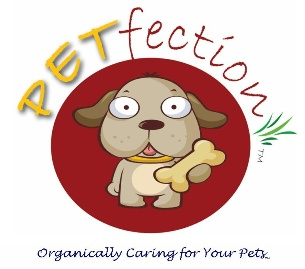Canine Massage - How and Why You Should Try It February 15 2018
Canine massage.... have you tried it? Learning massage techniques to use on your dog(s) is an easy and very therapeutic way to spend time with them. Massage can be used for a variety of ailments or just relaxation and bonding. Massage means using "purposeful touch" to manipulate the muscle tissue to heal, reduce stress, improve agility, detect stiffness, pain, or swelling, and to help your dog relax. There are different techniques you can use depending on what you're wanting to accomplish.

Now before you start your massage, you ideally you want to find a quiet area that can become your "massage zone." Help your dog get relaxed by providing a bed or towel for them to lay on or just let them stretch out in any position they want. You can also prep the room or area with our Calming Spray. When massaging a dog you can't force them into positions; you really just have to work with them in whatever position they're laying. This means when they move, you move with them. Also, listen and watch your dog as they will tell you when something feels nice and when there's an area they do not want massaged. Sounds of sighing and groaning or leaning into your hand can be signs the massage is feeling extra nice in that area. Pulling away, yelping, whining, or getting up and trying to move are signs you should avoid massaging that particular area and revisit it later. Aim to massage your dog for 15 minutes a day, if you only have five minutes available either focus on one area like the ears and head or hold off until you can give them more time and you're not distracted.
There are certain times that you DO NOT want to massage your dog. These would be immediately after strenuous play or exercise, if they have a severe injury, have a skin disease, underwent surgery in the last 3 days, or are sick with a fever. If your dog has a cyst, a torn muscle, small wound, acute swelling or sprain, or arthritis, it is OK to massage them above and below these areas (light touch will actually help speed up healing and relieve aches and stiffness).
There are several types of massage strokes you can use. Effleurage (long broad strokes) are often used to warm up the muscle or to encourage relaxation. Kneading and Friction are used to break up tight muscle fibers by squeezing, rolling, and lifting. Compression is pressing into the muscle on larger areas with bone underneath (ie. the hips and hind legs). Wringing can be used on the legs and limbs by gently using both hands to move up and down the leg like you're wringing out a washcloth. Lastly, Rocking is physically rocking your dog from side to side or up and down to stimulate calming. If remembering these terms is daunting, check out the drawings below from Lili Chin to follow while you are practicing your dogs massage! They are a great resource to print out and you can find them all on our Pinterest Page.
This is another helpful picture of a Dog's Muscle Anatomy:
Be sure to use our Joint Massage Oil to help with your massage and for extra healing properties. It is designed to heal and reduce inflammation in your dog’s joints and muscles. It can be used on arthritic hips, limping legs, pulled muscles or tendons, and stiffness found throughout the body. Yes it is safe to lick!
Remember, massage not only provides relaxation, but it's a great way to stimulate the body to naturally heal itself! Your dog will love you for it and you'll enjoy the bonding moment it creates. To learn more on specific techniques or canine massage in general, the book A Dog Lover's Guide to Canine Massage is a great one to check out! Happy massaging!








